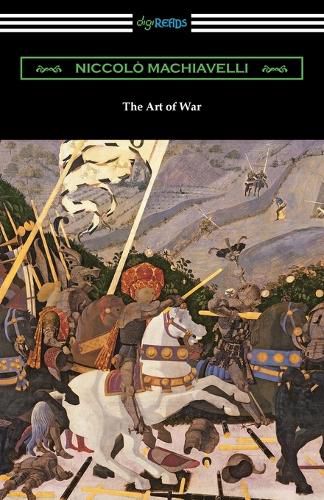Readings Newsletter
Become a Readings Member to make your shopping experience even easier.
Sign in or sign up for free!
You’re not far away from qualifying for FREE standard shipping within Australia
You’ve qualified for FREE standard shipping within Australia
The cart is loading…






This title is printed to order. This book may have been self-published. If so, we cannot guarantee the quality of the content. In the main most books will have gone through the editing process however some may not. We therefore suggest that you be aware of this before ordering this book. If in doubt check either the author or publisher’s details as we are unable to accept any returns unless they are faulty. Please contact us if you have any questions.
Written after 1513’s The Prince, Niccolo Machiavelli’s war treatise, The Art of War , is a dazzling array of war tactics and strategies based on the military strength of the Romans. Machiavelli wrote The Art of War as a dialogue between a group of young men in the Florentine republic. The main narrator, Lord Fabrizio Colonna, is the voice of knowledge and wisdom. The others ask questions about military tactics, and Fabrizio gives them advice on an army’s training, deployment, and organization. Much like how the military communicates within itself, Machiavelli’s The Art of War is a clear, precise, and structured text. It doesn’t have the same wit and cynicism of Machiavelli’s other works, but by choosing this style, the author was purposefully mimicking his subject. He also calls upon the classical tradition of a dialogue to share his wisdom. While yielding to classic Roman strategies may seem outdated, Machiavelli was an expert on the subject. He spent fourteen years as the secretary to the Chancery of Florence, allowing him to oversee the day-to-day activities, weaponry, and logistics of the army. After The Art of War was released in 1521, world leaders and military tacticians slowly adopted his war philosophies as their own; the Roman strategies outlined in Machiavelli’s treatise had already proved reliable for over one-thousand years, and they would continue to be applicable for many more years to come. This edition is printed on premium acid-free paper and follows the translation of Henry Neville.
$9.00 standard shipping within Australia
FREE standard shipping within Australia for orders over $100.00
Express & International shipping calculated at checkout
This title is printed to order. This book may have been self-published. If so, we cannot guarantee the quality of the content. In the main most books will have gone through the editing process however some may not. We therefore suggest that you be aware of this before ordering this book. If in doubt check either the author or publisher’s details as we are unable to accept any returns unless they are faulty. Please contact us if you have any questions.
Written after 1513’s The Prince, Niccolo Machiavelli’s war treatise, The Art of War , is a dazzling array of war tactics and strategies based on the military strength of the Romans. Machiavelli wrote The Art of War as a dialogue between a group of young men in the Florentine republic. The main narrator, Lord Fabrizio Colonna, is the voice of knowledge and wisdom. The others ask questions about military tactics, and Fabrizio gives them advice on an army’s training, deployment, and organization. Much like how the military communicates within itself, Machiavelli’s The Art of War is a clear, precise, and structured text. It doesn’t have the same wit and cynicism of Machiavelli’s other works, but by choosing this style, the author was purposefully mimicking his subject. He also calls upon the classical tradition of a dialogue to share his wisdom. While yielding to classic Roman strategies may seem outdated, Machiavelli was an expert on the subject. He spent fourteen years as the secretary to the Chancery of Florence, allowing him to oversee the day-to-day activities, weaponry, and logistics of the army. After The Art of War was released in 1521, world leaders and military tacticians slowly adopted his war philosophies as their own; the Roman strategies outlined in Machiavelli’s treatise had already proved reliable for over one-thousand years, and they would continue to be applicable for many more years to come. This edition is printed on premium acid-free paper and follows the translation of Henry Neville.